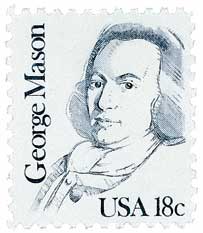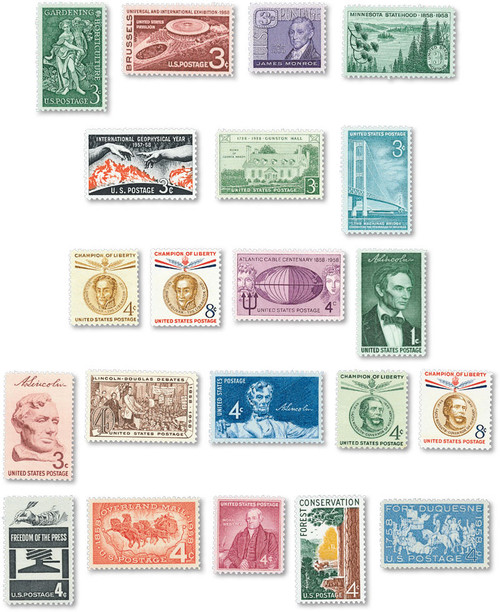
# 1108 PB - 1958 3¢ Gunston Hall
3¢ Gunston Hall
City: Lorton, VA
Printing Method: Rotary press
Perforations: 11 x 10.5
Quantity: 108,415,200
Color: Light green
Birth Of George Mason
After his father died in 1735, Mason inherited his substantial estate. He would receive schooling for several years before being named to the Fairfax County Court in 1747.
During this time Mason also became an officer in the county militia, reaching the rank of colonel. In 1750, he got married and a few years later, he began building their family home, Gunston Hall. It is said that Mason personally oversaw every aspect of the construction. To prevent being dependent on farming tobacco, he leased out much of the property to tenant farmers, and grew grapes for wine as well. During this period Mason also befriended George Washington.
In 1758, Mason won a seat in the House of Burgesses, serving alongside Washington and Richard Henry Lee. His first task was to raise a militia for the French and Indian War. The following year he was placed on the Committee on Privileges and Elections and the Committee on Propositions and Grievances.

In the coming years Mason, like many other colonists, grew to oppose the British colonial policies. After the passage of the Stamp Act, which required that revenue stamps be used on all papers for trade and legal purposes, many were upset. Washington looked to Mason for advice (as Mason had left the House of Burgesses by that time). Mason composed an act that would circumvent the British act, meaning certain legal documents could be used without using the stamps. This led to a boycott of the stamps and the repeal of the act in 1766.
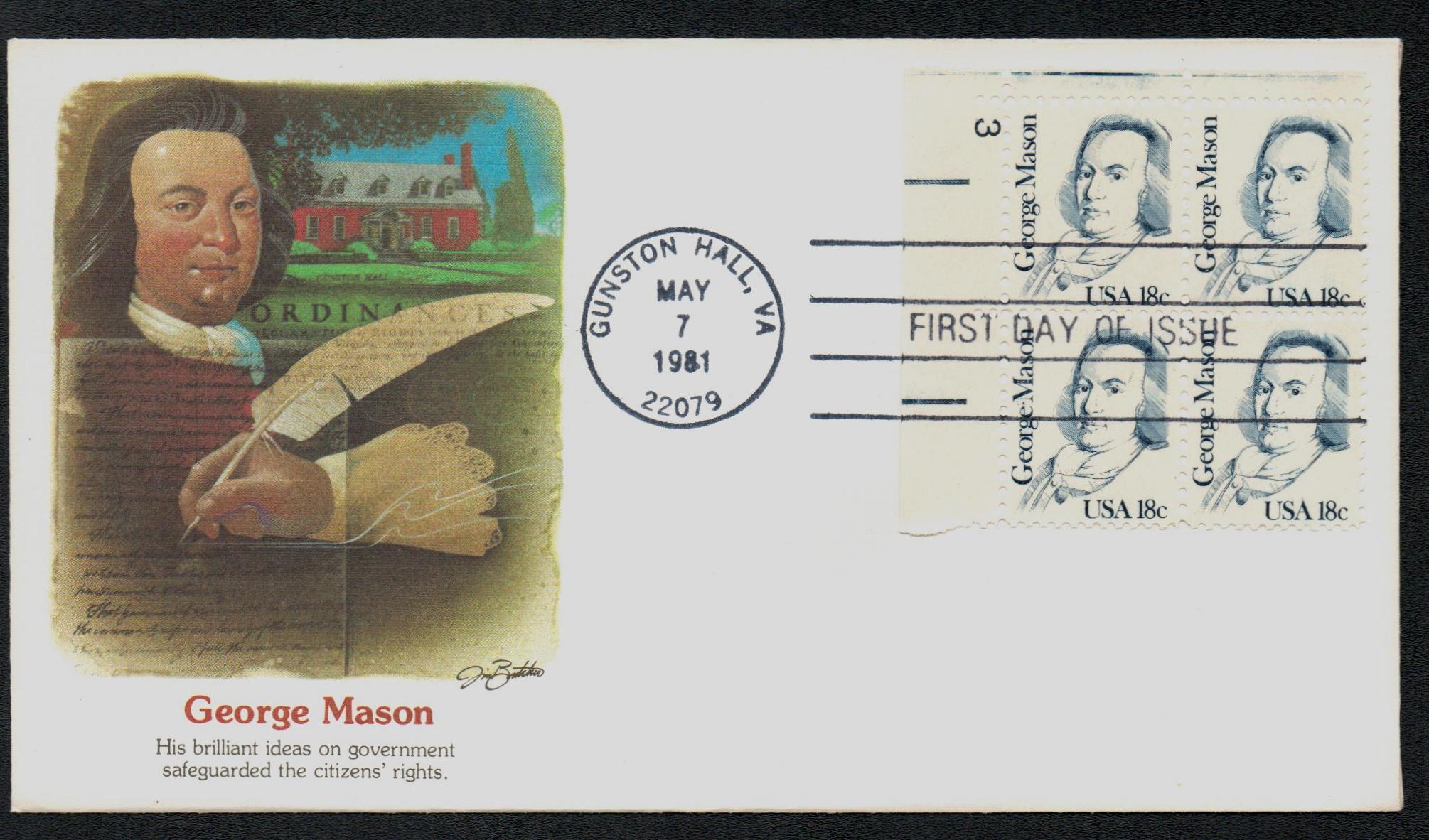
As a result of that repeal, the British then passed the Townshend Acts, which placed duties on a variety of products. The House of Burgesses was then dissolved, but the delegates met anyway and passed a non-importation agreement based on a document written by Mason.
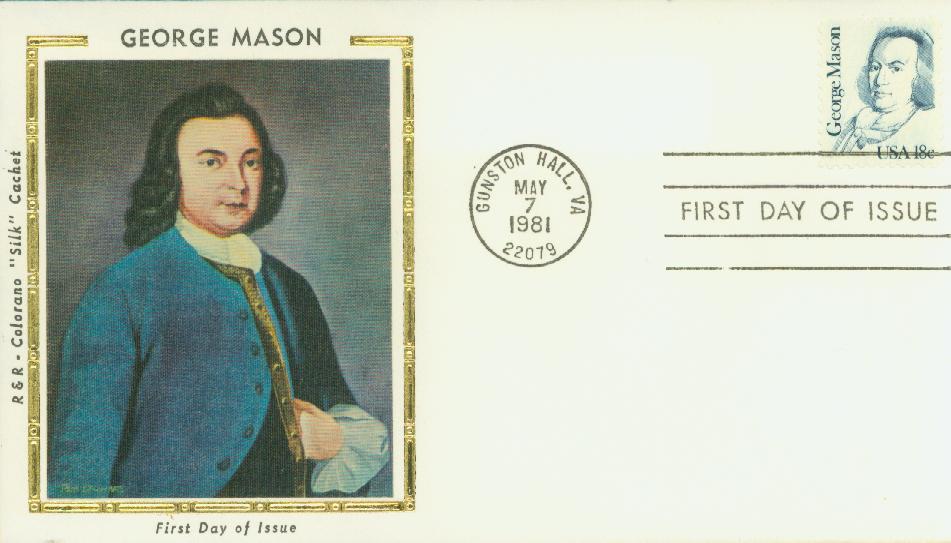
In 1774, the British passed the Intolerable Acts (even harsher laws introduced as punishment for the Boston Tea Party). By this time, Mason was a widower, responsible for raising nine children on his own. But the rising tensions and a call from George Washington kept Mason at the forefront of the revolutionary movement. He wrote most of the Fairfax Resolves, a set of resolutions rejecting the British claim of supreme authority over the colonies and calling for a continental congress.
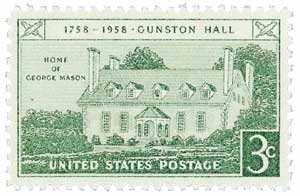
For the next year, Mason worked to organize a militia that would be independent of the royal government. Then in 1775, he was elected as a delegate to the third Virginia Convention. He was then elected to the Committee of Safety. He tried to resign, due to poor health and duty to raise his children, but his resignation was refused. Despite his poor health, Mason was then given the monumental task of drafting a declaration of rights and a plan of government. Working with others, but the primary author, Mason penned the Virginia Declaration of Rights and the Constitution of Virginia. The Declaration of Rights is considered Mason’s greatest work and it inspired a number of other documents, including the Declaration of Independence.
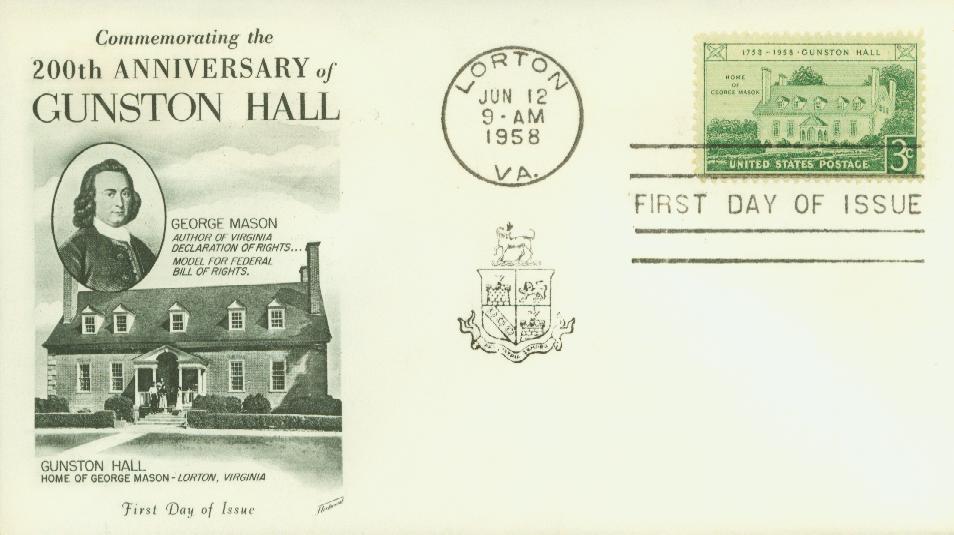
In 1787, Mason attended the Constitutional Convention in Philadelphia. He spoke enthusiastically, delivering 136 speeches as counted by James Madison. Mason was then part of a committee that developed the Great Compromise (House representation based on population and equal representation in the Senate). However, Mason wanted an immediate end to the slave trade and to pen a bill of rights. When his requests were denied, he refused to sign the Constitution. Eventually, a Bill of Rights was drafted and ratified, but by that time Mason had retired from public life. He died a year later on October 7, 1792.
3¢ Gunston Hall
City: Lorton, VA
Printing Method: Rotary press
Perforations: 11 x 10.5
Quantity: 108,415,200
Color: Light green
Birth Of George Mason
After his father died in 1735, Mason inherited his substantial estate. He would receive schooling for several years before being named to the Fairfax County Court in 1747.
During this time Mason also became an officer in the county militia, reaching the rank of colonel. In 1750, he got married and a few years later, he began building their family home, Gunston Hall. It is said that Mason personally oversaw every aspect of the construction. To prevent being dependent on farming tobacco, he leased out much of the property to tenant farmers, and grew grapes for wine as well. During this period Mason also befriended George Washington.
In 1758, Mason won a seat in the House of Burgesses, serving alongside Washington and Richard Henry Lee. His first task was to raise a militia for the French and Indian War. The following year he was placed on the Committee on Privileges and Elections and the Committee on Propositions and Grievances.

In the coming years Mason, like many other colonists, grew to oppose the British colonial policies. After the passage of the Stamp Act, which required that revenue stamps be used on all papers for trade and legal purposes, many were upset. Washington looked to Mason for advice (as Mason had left the House of Burgesses by that time). Mason composed an act that would circumvent the British act, meaning certain legal documents could be used without using the stamps. This led to a boycott of the stamps and the repeal of the act in 1766.

As a result of that repeal, the British then passed the Townshend Acts, which placed duties on a variety of products. The House of Burgesses was then dissolved, but the delegates met anyway and passed a non-importation agreement based on a document written by Mason.

In 1774, the British passed the Intolerable Acts (even harsher laws introduced as punishment for the Boston Tea Party). By this time, Mason was a widower, responsible for raising nine children on his own. But the rising tensions and a call from George Washington kept Mason at the forefront of the revolutionary movement. He wrote most of the Fairfax Resolves, a set of resolutions rejecting the British claim of supreme authority over the colonies and calling for a continental congress.

For the next year, Mason worked to organize a militia that would be independent of the royal government. Then in 1775, he was elected as a delegate to the third Virginia Convention. He was then elected to the Committee of Safety. He tried to resign, due to poor health and duty to raise his children, but his resignation was refused. Despite his poor health, Mason was then given the monumental task of drafting a declaration of rights and a plan of government. Working with others, but the primary author, Mason penned the Virginia Declaration of Rights and the Constitution of Virginia. The Declaration of Rights is considered Mason’s greatest work and it inspired a number of other documents, including the Declaration of Independence.

In 1787, Mason attended the Constitutional Convention in Philadelphia. He spoke enthusiastically, delivering 136 speeches as counted by James Madison. Mason was then part of a committee that developed the Great Compromise (House representation based on population and equal representation in the Senate). However, Mason wanted an immediate end to the slave trade and to pen a bill of rights. When his requests were denied, he refused to sign the Constitution. Eventually, a Bill of Rights was drafted and ratified, but by that time Mason had retired from public life. He died a year later on October 7, 1792.




